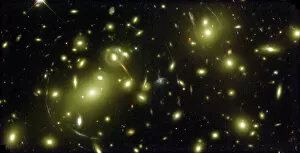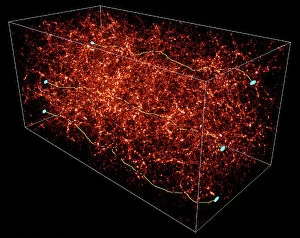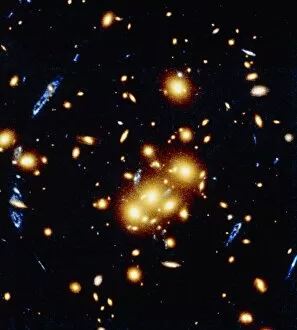Lensing Collection
"Lensing: A Cosmic Magnifying Glass Revealing the Secrets of the Universe" In the vast expanse of space, a phenomenon known as lensing acts as a cosmic magnifying glass
For sale as Licensed Images
Choose your image, Select your licence and Download the media
"Lensing: A Cosmic Magnifying Glass Revealing the Secrets of the Universe" In the vast expanse of space, a phenomenon known as lensing acts as a cosmic magnifying glass, allowing us to peer into the mysteries of our universe. Just like how a raindrop resting in the cup-shaped fruiting body of Cup Lichen (Cladonia pyxidata) can create an optical effect, lensing bends and distorts light, providing astronomers with invaluable insights. At Clumber Park, nature showcases its own version as raindrops delicately rest within the cups formed by Cup Lichen's fruiting bodies. These tiny lenses reveal intricate details when observed up close. Similarly, cosmic string lensing captivates artists' imagination through stunning artwork that portrays this celestial phenomenon. Lensing is not limited to earthly or artistic realms; it extends far beyond. The Hubble Space Telescope captures breathtaking images such as gravitational lens 0024+1654, where massive objects warp spacetime and act as natural lenses in space. This captivating view allows scientists to map dark matter and understand its role in shaping our cosmos. Moreover, lensing unveils fascinating optical effects both underwater and above ground. In shallow sea water, chromatic aberration creates mesmerizing patterns while caustics dance beneath its surface – reminding us that even in Earth's oceans we can witness these remarkable phenomena. As we delve deeper into understanding our universe's fabric, black hole models aid researchers in comprehending how gravity warps light around these enigmatic entities. Gravitational lenses offer glimpses into distant galaxies by bending their light paths towards us – opening windows to explore regions otherwise hidden from sight. Through lensing techniques and advancements in technology, scientists continue to construct detailed dark matter maps that shed light on one of astronomy's greatest puzzles: what lies beyond what we can directly observe? These maps allow us to visualize invisible matter distributions across vast cosmic scales, unraveling the mysteries of our universe.









